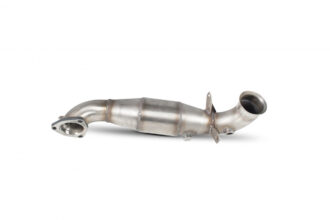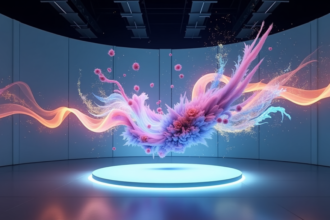Walk into any comic convention, browse through online marketplaces, or visit collector forums, and you’ll encounter a fascinating phenomenon: adults passionately collecting toys from decades past. These aren’t just casual purchases or impulse buys. They’re carefully curated collections that can span entire rooms, represent significant financial investments, and hold profound emotional meaning for their owners.
The sight of a grown professional meticulously arranging vintage action figures or proudly displaying mint-condition dolls might seem puzzling to outsiders. But this behavior represents something far more complex than mere materialism. Adult toy collecting has evolved into a multi-billion dollar market, with collectors spanning every demographic and income level. From Star Wars figures to Barbie dolls, from LEGO sets to vintage board games, these childhood artifacts have found new life in the hands of adults who view them as treasures worth preserving, investments worth making, and connections worth maintaining to simpler times.
The Psychology Behind Adult Toy Collecting
Understanding why adults collect old toys requires delving into fundamental human psychology. At its core, collecting behavior taps into several deep-seated psychological needs that extend far beyond simple acquisition.
Research indicates that collecting serves as a powerful form of self-expression and identity formation. Each collection becomes a unique reflection of the collector’s personality, interests, and values. Whether someone focuses on vintage superhero figures or classic board games, their choices reveal aspects of their character and serve as tangible extensions of their inner world.
The act of collecting also provides a sense of control and mastery in an often chaotic world. Building a collection requires research, planning, and decision-making skills. Collectors become experts in their chosen field, developing deep knowledge about manufacturing histories, rare variants, and market values. This expertise brings a sense of accomplishment and authority that can be deeply satisfying.
Furthermore, the systematic nature of collecting appeals to our innate desire for order and completion. Many collectors are driven by the goal of completing specific sets or finding particularly rare pieces. This pursuit activates the brain’s reward system, releasing dopamine when goals are achieved and creating a natural high that encourages continued collecting behavior.
The hunt itself becomes as important as the acquisition. Scouring flea markets, monitoring online auctions, and networking with other collectors provides excitement and social interaction. This treasure-hunting aspect transforms collecting from a passive accumulation into an active, engaging hobby that stimulates both mind and spirit.
Nostalgia as a Powerful Emotional Driver
Perhaps no factor influences adult toy collecting more powerfully than nostalgia. This complex emotion serves as the primary gateway through which adults reconnect with their childhood selves, and old toys with sentimental value become vessels for these profound emotional experiences.
Scientific research has established that nostalgia functions as far more than simple sentimentality. According to studies published in leading psychology journals, nostalgia boosts self-esteem, increases meaning in life, and fosters social connectedness. When adults encounter toys from their past, they’re not just seeing objects—they’re accessing a complex web of memories, emotions, and associations that can instantly transport them to earlier times.
The power of these nostalgic triggers cannot be overstated. A single glimpse of a childhood toy can evoke vivid memories of Christmas mornings, birthday parties, or quiet afternoons spent in imagination. These memories carry emotional weight that transcends the monetary value of the objects themselves, creating profound connections between past and present.
Recent market research supports this emotional connection. A 2023 survey found that four in five Americans may be “kidults”—adults who actively seek out nostalgic items from their childhood. Among these individuals, 67 percent would try to buy replicas of childhood items, and 76 percent feel genuine nostalgia in the process. This isn’t merely about material acquisition; it’s about emotional restoration and connection to formative experiences.
The therapeutic value of nostalgia extends beyond personal satisfaction. Research shows that nostalgic experiences increase positive emotions while decreasing sadness and anxiety. For adults facing the stresses of modern life, collecting childhood toys provides a direct line to simpler, more carefree times. The bright colors, familiar sounds, and tactile experiences of vintage toys can serve as powerful stress-relief tools.
This emotional dimension explains why collectors often focus on specific eras or franchises that were significant during their formative years. Children of the 1980s gravitate toward Transformers and G.I. Joe figures, while those who grew up in the 1990s might collect Pokémon cards or Teenage Mutant Ninja Turtles merchandise. Each generation finds different toys meaningful, but the underlying emotional drivers remain consistent.
The Therapeutic Benefits of Collecting
Beyond nostalgia, adult toy collecting offers significant therapeutic benefits that mental health professionals are beginning to recognize and study. The act of collecting and caring for objects can serve as a form of mindfulness practice, grounding individuals in the present moment while providing emotional regulation.
The organizational aspects of collecting provide structure and routine, which can be particularly beneficial for individuals dealing with anxiety or depression. Cataloging collections, researching new additions, and maintaining displays creates predictable, manageable tasks that offer a sense of accomplishment and control.
Many collectors report that handling their toys provides tactile comfort during stressful periods. The familiar weight, texture, and appearance of childhood objects can trigger calming responses and help regulate emotional states. This phenomenon aligns with therapeutic approaches that use familiar objects to support emotional well-being.
The goal-oriented nature of collecting also supports positive mental health outcomes. Setting collecting goals, tracking progress, and celebrating acquisitions mirrors cognitive-behavioral therapy techniques that help individuals build confidence and maintain motivation. Successfully completing a collection or finding a particularly sought-after piece can boost self-esteem and provide a sense of achievement.
Research published in psychology journals indicates that collecting can serve as a form of self-care that provides mental vacation time and helps collectors cope with life’s challenges. The immersive focus required for collecting activities can provide relief from rumination and worry, creating space for mental restoration.
Building Community Through Shared Passions
Adult toy collecting has evolved into a vibrant social phenomenon that connects individuals across geographical, cultural, and generational boundaries. The community aspect of collecting often proves as valuable as the objects themselves, creating lasting friendships and support networks.
Online forums, social media groups, and specialized websites have transformed collecting from a solitary pursuit into a collaborative experience. Collectors share knowledge, trade items, and celebrate each other’s finds. These digital communities provide platforms for learning, networking, and forming meaningful connections with like-minded individuals.
Conventions and collector shows offer opportunities for face-to-face interaction and community building. These events bring together thousands of collectors who share stories, display collections, and participate in buying, selling, and trading activities. The social connections formed at these gatherings often extend far beyond collecting, creating lasting friendships and professional networks.
The intergenerational nature of toy collecting creates unique opportunities for connection between different age groups. Older collectors often serve as mentors to younger enthusiasts, sharing knowledge about toy history, collecting strategies, and market trends. This knowledge transfer helps preserve collecting culture while introducing new generations to the hobby.
Many collectors find that their hobby strengthens existing relationships as well. Parents and children bond over shared collecting interests, while couples often develop collecting partnerships that enhance their relationships. The collaborative aspects of collecting—research, hunting, and displaying—create opportunities for quality time and shared experiences.
The validation and recognition that comes from community involvement can be particularly meaningful for collectors. Having others appreciate and understand the value of collections provides social support and affirmation that might be lacking in other areas of life. This recognition helps combat any stigma associated with adult toy collecting and reinforces the legitimacy of the hobby.
Investment Potential and Market Growth
While emotional satisfaction drives most collectors, the financial potential of vintage toys has become increasingly significant. The collectibles market has experienced remarkable growth, with toy collectibles representing a substantial and expanding sector.
Market research indicates that the global toy collectibles market was valued at approximately $12.5 billion in 2023 and is projected to reach $20.3 billion by 2032, representing a compound annual growth rate of 5.7%. This growth is driven by increasing collector enthusiasm, popular culture influence, and the rising trend of nostalgia-based products.
Several factors contribute to the investment potential of vintage toys. Rarity plays a crucial role—toys that were produced in limited quantities or from discontinued lines often appreciate significantly in value. Condition is equally important, with mint-condition items commanding premium prices. Original packaging can multiply value exponentially, with some collectors paying thousands of dollars for toys still sealed in their original boxes.
Certain toy categories have demonstrated particularly strong investment performance. Vintage Star Wars figures, classic LEGO sets, and original Barbie dolls have all shown impressive appreciation over time. Some collectors report that items like Mattel’s Masters of the Universe Eternia Playset, which sold for around $100 in the 1980s, now command an average of $5,000 in original packaging.
The investment aspect has attracted attention from financial advisors and portfolio managers who recognize collectibles as alternative investments. Unlike traditional investments, collectible toys offer the advantage of being enjoyed while potentially appreciating in value. This dual benefit makes them attractive to investors who want their portfolios to reflect their personal interests.
However, successful toy investment requires knowledge, patience, and careful market analysis. Values can fluctuate based on cultural trends, media releases, and collector interest. Professional collectors emphasize the importance of buying items you genuinely enjoy, as the emotional satisfaction provides value even if financial returns don’t materialize as expected.
The rise of online marketplaces has made it easier to track values and find rare items, but it has also increased competition among collectors. Authentication and condition assessment have become crucial skills for serious collectors, as the market includes both genuine vintage items and modern reproductions.
Types of Toys That Capture Adult Hearts
Not all toys capture adult collectors’ imagination equally. Certain categories have proven particularly enduring and valuable, often reflecting broader cultural trends and technological developments that shaped different generations.
Action figures represent perhaps the most popular collecting category. Vintage figures from franchises like Star Wars, G.I. Joe, and Transformers consistently attract dedicated collectors. These toys often feature intricate designs, articulation, and accessories that appeal to adult sensibilities. The storytelling elements associated with these figures—comic books, movies, and television shows—create emotional connections that extend beyond the toys themselves.
Building sets, particularly LEGO collections, have experienced explosive growth in adult collecting. The company has recognized this trend by creating sophisticated sets specifically designed for adult builders. These sets often feature complex architectural models, detailed vehicles, and intricate mechanical functions that challenge and engage adult minds. The modular nature of LEGO allows for endless creativity and modification, making it particularly appealing to collectors who enjoy active engagement with their collections.
Vintage dolls, including Barbie and other fashion dolls, attract collectors who appreciate craftsmanship, fashion history, and cultural significance. These toys often feature elaborate clothing, accessories, and packaging that reflect the design sensibilities of their era. The evolution of these dolls over time provides insight into changing social attitudes and aesthetic preferences.
Board games and puzzles have seen renewed interest from adult collectors, particularly those featuring vintage artwork or representing important moments in gaming history. These items often combine nostalgia with practical utility, as they can still be enjoyed for their intended purpose while serving as display pieces.
Trading cards, particularly sports cards and game cards like Pokémon, have created their own collecting subculture. The combination of chance, strategy, and potential financial return makes these items particularly appealing to collectors who enjoy both the hunt and the investment potential.
Die-cast vehicles, model trains, and other miniature representations of real-world objects appeal to collectors who appreciate craftsmanship and attention to detail. These items often feature sophisticated engineering and materials that rival adult collectibles in quality and complexity.
The Future of Adult Toy Collecting
As we look toward the future, adult toy collecting shows no signs of slowing down. Several trends suggest continued growth and evolution in this fascinating hobby.
Digital integration is beginning to influence collecting, with augmented reality applications allowing collectors to catalog and display their collections virtually. Blockchain technology and NFTs are creating new categories of digital collectibles that complement physical items. These technological advances may transform how collectors interact with their hobby while preserving its essential emotional and social elements.
The “kidult” market continues to expand, with toy sales to adults increasing by $666 million from September 2022 to September 2023. This growth is driven by millennials and Gen Z consumers who have both the disposable income and the cultural permission to indulge in nostalgic purchases.
Sustainability concerns are beginning to influence collecting behavior, with increased interest in vintage and second-hand items rather than new production. This trend aligns with broader environmental awareness while supporting the preservation of toy history and craftsmanship.
The globalization of collecting has created new opportunities for cultural exchange and discovery. Collectors can now access toys from different countries and cultures, expanding their understanding of global childhood experiences and design traditions.
As the first generation of video game players reaches middle age, digital entertainment collectibles are gaining traction. This includes not only physical gaming merchandise but also virtual items and experiences that blur the lines between digital and physical collecting.
Adult toy collecting represents far more than simple nostalgia or material accumulation. It’s a complex psychological phenomenon that serves multiple human needs: emotional connection, social belonging, intellectual stimulation, and creative expression. The toys themselves become vehicles for memory, meaning, and community in ways that transcend their original purpose as children’s playthings.
The growing acceptance and recognition of adult collecting as a legitimate hobby reflects broader cultural shifts toward embracing joy, creativity, and personal passion regardless of age. As research continues to validate the psychological benefits of nostalgia and collecting, we can expect this trend to continue growing and evolving.
For those who collect, the hobby offers a unique combination of personal satisfaction, social connection, and potential financial benefit. It provides a constructive outlet for the universal human desire to connect with the past while building something meaningful for the future. Whether driven by nostalgia, investment potential, or pure enjoyment, adult toy collectors are preserving important cultural artifacts while enriching their own lives in the process.
The next time you see an adult carefully examining a vintage toy or proudly displaying a collection, remember that you’re witnessing something profound: the human capacity to find joy, meaning, and connection in the objects that shaped our earliest experiences. In a world that often demands we abandon childish things, toy collectors remind us that some childhood treasures are worth preserving, celebrating, and sharing with others who understand their enduring magic.
















